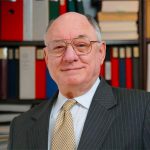Recorded: October 28, 2020
Description: Too many talk about the glamor and glory of green buildings as well as the higher income for designers, contractors, and product manufacturers. However, too few talk about the risks and performance problems. This presentation will examine some of the many reasons why green buildings do not always perform as expected, some misconceptions about “high performance” green and sustainable buildings, and some of the risks for designers, contractors, and manufacturers, as well as for owners and operators. Even meeting the mandatory prerequisites of USGBC LEED®, BREEAM, ASHRAE 90.1, and other certification programs is easily challenged. Most industry publications regularly feature green buildings, but do not publish the metered energy use or occupant satisfaction for comparison with the readers’ own experience. Too much reliance is placed on energy models lacking in occupant, operator, and maintainer behavioral impacts.
Actual experience with metered energy data from green and sustainable buildings shows that most of these buildings do have performance gaps as do comparable traditional new buildings. A key reason is the complexity that is designed and installed to achieve more points and higher expectations, but rarely performs as modeled or advertised. Too much building enclosure insulation is another reason. Most building operators are not qualified to understand these complex systems and their intended functionality. Even many contractors have little or no training or experience with installing and maintaining these systems. This presentation will provide several case study examples of widely publicized green and sustainable buildings with metered data that shows they are not energy efficient.
Speaker: Larry Spielvogel
 Larry Spielvogel is a Consulting Engineer in Bala Cynwyd, Pennsylvania, a suburb of Philadelphia. He holds a B.S. in Mechanical Engineering from Drexel University and is a Registered Professional Engineer in 49 States. He is also a Chartered Engineer in England, a European Engineer in all 27 Common Market Countries, an International Professional Engineer in 11 other countries, a Certified Plant Engineer, and has lectured and written extensively.
Larry Spielvogel is a Consulting Engineer in Bala Cynwyd, Pennsylvania, a suburb of Philadelphia. He holds a B.S. in Mechanical Engineering from Drexel University and is a Registered Professional Engineer in 49 States. He is also a Chartered Engineer in England, a European Engineer in all 27 Common Market Countries, an International Professional Engineer in 11 other countries, a Certified Plant Engineer, and has lectured and written extensively.
He is a Fellow of ASHRAE (American Society of Heating, Refrigerating, and Air Conditioning Engineers), was an ASHRAE Distinguished Lecturer, and is a winner of its Distinguished Service Award. From 2002 to 2005, he served on the ASHRAE Board of Directors and on many standing committees. He spent 19 years as a member and chaired the ANSI/ASHRAE/IES Standard 90.1 Project Committee from 1999 to 2002, which serves as the basis for most building energy codes and is the energy benchmark for Federal tax legislation, the US Green Building Council LEED® Program, and most other green building programs. He served on the IES Board of Directors from 1976 to 1979.
He is also a Fellow of CIBSE (Chartered Institution of Building Services Engineers) (England), a Fellow of the SLL (Society of Light and Lighting) (England), an Emeritus Member of IES (Illuminating Engineering Society), and a Charter Member of ASPE (American Society of Plumbing Engineers), NFPA (National Fire Protection Association), ICC (International Code Council), and many other Technical Societies.
Civic service includes the Township Construction Codes Appeals Panel, the Boards of the Lower Merion Symphony Orchestra, the Interfaith Coalition on Energy, and the Military Order of the World Wars.
His practice is limited to consulting on energy management, procurement, and problem solving in buildings, and he has been a consultant on many major buildings around the country and the world.
